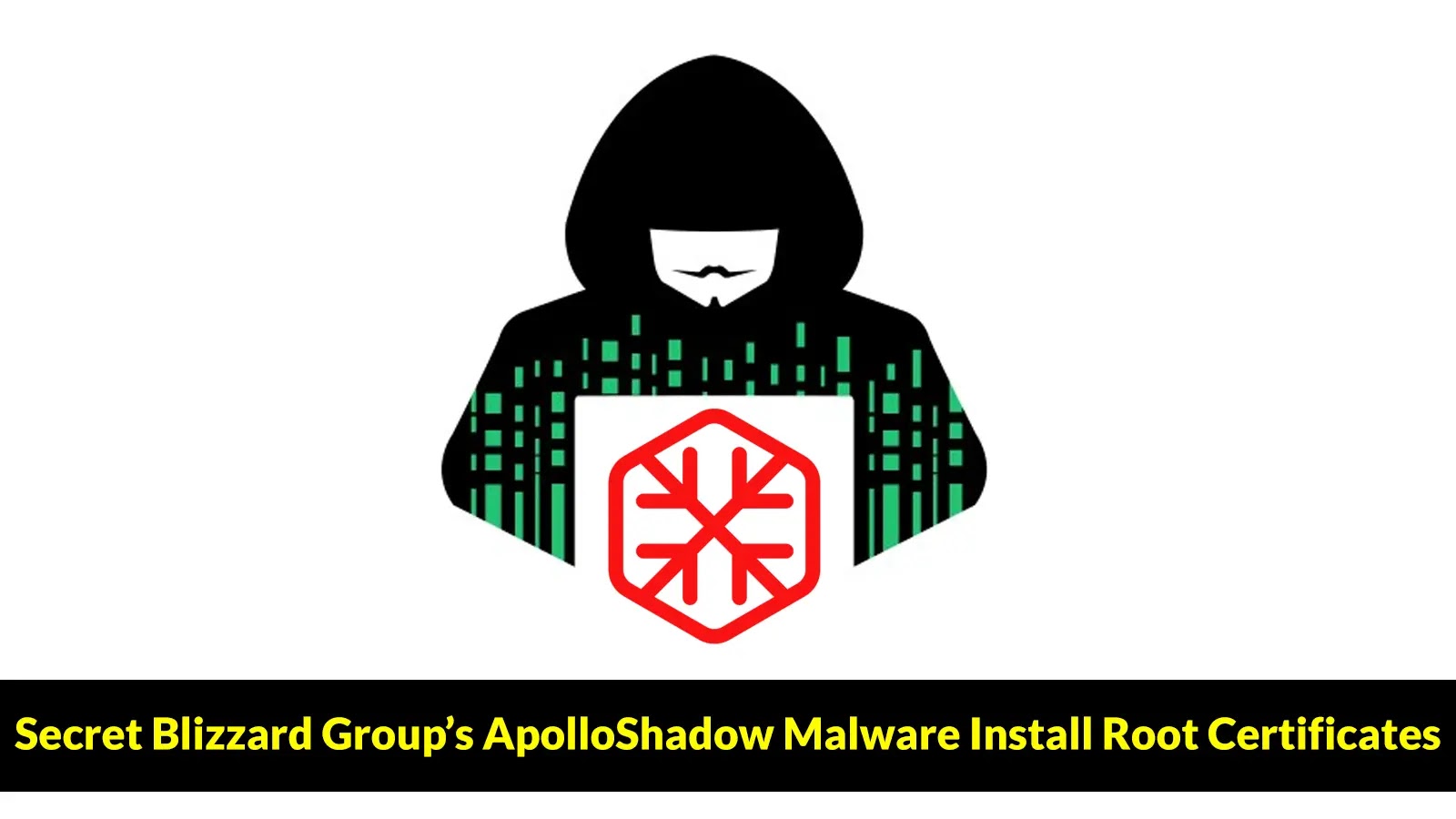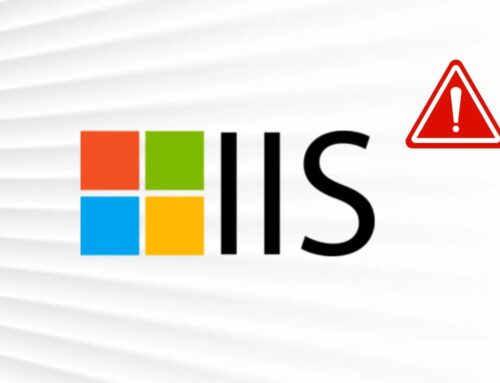
Secret Blizzard Group’s ApolloShadow Malware Install Root Certificates on Devices to Trust Malicious Sites
A disturbing new cyberespionage campaign has cast a harsh spotlight on the foundational elements of digital trust. Imagine a scenario where the very certificates designed to authenticate websites and secure your communications are instead used to usher in malicious activity. This isn’t a hypothetical threat; it’s the reality unveiled by the “Secret Blizzard” group, a sophisticated state-sponsored entity employing the custom ApolloShadow malware to target foreign embassies in Moscow.
This attack vector, leveraging an adversary-in-the-middle (AitM) position, fundamentally undermines the security assumptions we rely on daily. Understanding this sophisticated threat, its mechanics, and the necessary countermeasures is paramount for any organization, particularly those operating in sensitive diplomatic or geopolitical contexts.
ApolloShadow: The Weaponization of Digital Trust
The core innovation, or rather, the core danger of ApolloShadow, lies in its ability to force devices to trust fraudulent digital certificates. In a standard secure connection (HTTPS), your browser or operating system verifies a website’s identity through a chain of trust leading to a trusted Root Certificate Authority (CA). ApolloShadow bypasses this by installing its own malicious root certificates directly onto compromised devices.
Once a malicious root certificate is installed, the compromised device will inherently trust any website that presents a certificate signed by this rogue CA. This effectively gives the attackers free rein to conduct man-in-the-middle attacks, decrypting seemingly secure communications, injecting malicious content, and harvesting sensitive data without raising any red flags from the device’s security mechanisms. This is a dramatic escalation in cyber espionage tactics, moving beyond simple data exfiltration to a deep, pervasive compromise of digital integrity.
The Adversary-in-the-Middle (AitM) Operation
The “Secret Blizzard” group, identified as a Russian state-sponsored threat actor, has been orchestrating this campaign since at least 2024. Their advantage stems from a critical tactical position: access within internet service provider (ISP) infrastructure. This allows them to intercept network traffic before it reaches target devices, enabling them to inject the ApolloShadow malware and initiate the root certificate installation process.
This ISP-level access is a significant concern, as it gives the attackers a broad vantage point and the ability to selectively target victims with precision. It highlights the vulnerability of relying solely on endpoint security when the network infrastructure itself can be compromised or leveraged for malicious purposes. The AitM technique allows them to seamlessly inject the malware, making detection challenging from the user’s perspective.
Target Profile: Foreign Embassies in Moscow
The specific targeting of foreign embassies in Moscow underscores the political and espionage motivations behind this campaign. Diplomatic missions are repositories of highly sensitive information, including classified communications, strategic plans, and details on international relations. By compromising the digital infrastructure of these entities, “Secret Blizzard” aims to gain intelligence that could influence geopolitical dynamics and provide a strategic advantage to the Russian state.
This focused targeting emphasizes the importance of robust cybersecurity measures for any organization handling sensitive information, especially those operating in high-risk environments or within the purview of state-sponsored threat actors.
Remediation Actions and Prevention
Defending against a sophisticated threat like ApolloShadow requires a multi-layered approach, focusing on network security, endpoint hardening, and user awareness.
- Regular Certificate Audits: Organizations must implement processes to regularly audit and verify the legitimacy of root certificates installed on all devices. Tools for managing and monitoring certificates are crucial.
- Network Traffic Monitoring: Deploying robust network intrusion detection/prevention systems (IDS/IPS) capable of identifying anomalies in TLS/SSL traffic, such as unexpected certificate chains or attempts to install new root certificates, is vital.
- Endpoint Detection and Response (EDR): EDR solutions can help detect suspicious activities on endpoints, including attempts to modify system critical files or install unauthorized certificates, even if network defenses are bypassed.
- Principle of Least Privilege: Limit administrative privileges on user machines to prevent unauthorized installation of root certificates. Users should not be able to install new root CAs without explicit IT approval.
- DNS Security: Implement DNS filtering and security measures to prevent devices from resolving malicious domains that might be used in the AitM stage.
- Secure Web Gateways/Proxies: Utilize secure web gateways that inspect encrypted traffic, acting as an additional layer of defense against malicious certificate installations, though this requires careful configuration to avoid privacy issues.
- User Awareness Training: Educate users about the dangers of unsolicited certificate prompts and the importance of reporting any suspicious browser warnings.
- Patch Management: Ensure all operating systems, browsers, and security software are kept up-to-date to patch any known vulnerabilities (e.g., CVE-2024-XXXXX – placeholder as no specific CVE provided for ApolloShadow directly) that could be exploited.
Tools for Detection and Mitigation
Implementing the above recommendations often involves leveraging specialized tools. Here’s a brief overview of relevant categories and examples:
| Tool Category | Purpose | Typical Tools/Vendors |
|---|---|---|
| Certificate Management & Monitoring | Detecting unauthorized root certificate installations, monitoring certificate expiry, and ensuring compliance. | OpenSSL (command-line analysis), various enterprise PKI management solutions (e.g., PrimeKey EJBCA, Venafi), specific EDR features. |
| Network IDS/IPS & NDR | Identifying suspicious network traffic patterns, including anomalous TLS/SSL handshakes or proxy attempts. | Snort, Suricata, Zeek, various commercial Network Detection and Response (NDR) platforms (e.g., Darktrace, Vectra AI). |
| Endpoint Detection and Response (EDR) | Monitoring endpoint activity for malicious processes, file modifications, and system changes related to certificate installation. | CrowdStrike Falcon, Microsoft Defender for Endpoint, SentinelOne, Carbon Black. |
| Secure Web Gateways (SWG) & Proxies | Inspecting web traffic for malicious content and enforcing security policies, including certificate validation. | Zscaler, Palo Alto Networks (Prisma Access), Forcepoint, Cisco Umbrella. |
Conclusion
The “Secret Blizzard” group’s use of ApolloShadow malware to manipulate digital trust through root certificate installation represents a significant evolution in cyberespionage tactics. By leveraging AitM positions within ISP infrastructure, they demonstrate a chilling capability to undermine enterprise security at a fundamental level. Organizations, particularly those in sensitive sectors, must move beyond superficial security measures and adopt deep, comprehensive strategies that encompass rigorous certificate auditing, advanced network and endpoint monitoring, and proactive user education. The integrity of our digital communications hinges on our ability to defend the very mechanisms designed to establish trust.





